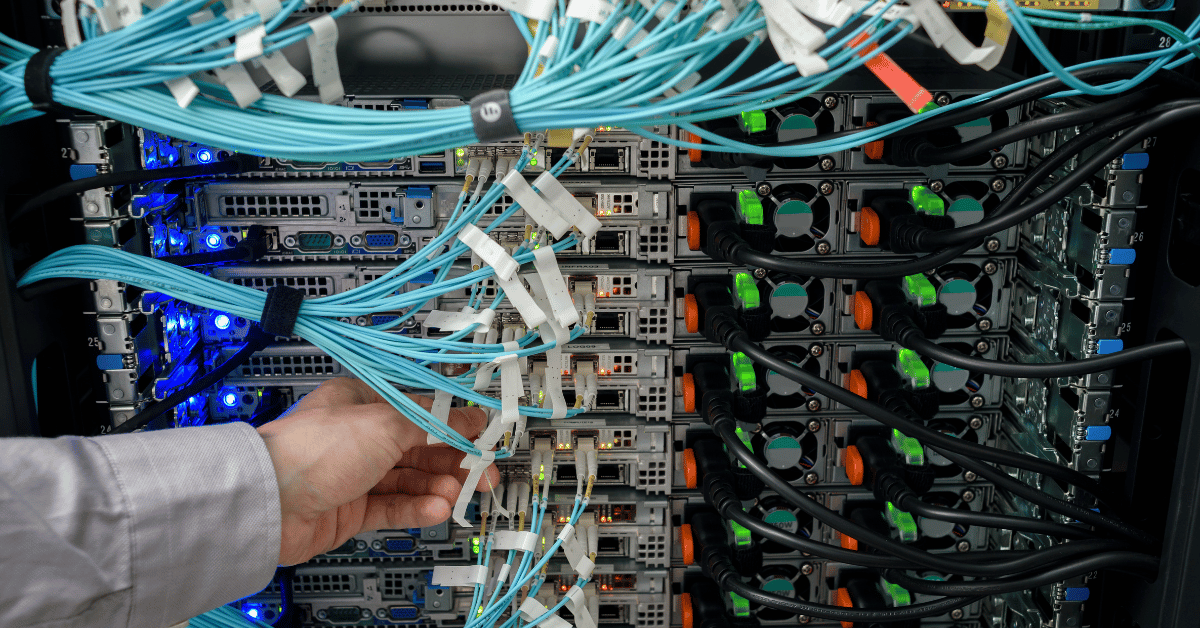Why is Aruba ClearPass So Complex?
What are the shortcomings of Aruba ClearPass?
Aruba ClearPass is a network access control and policy management solution offered by Aruba, a Hewlett Packard Enterprise company. While it offers several features and benefits, like any technology solution, it has its shortcomings. Some of the common shortcomings of Aruba ClearPass may include:
- Complexity: ClearPass can be complex to set up and configure, especially for organizations that are new to network access control (NAC) solutions. The initial deployment and configuration process can be time-consuming and may require a certain level of expertise.
- Cost: Aruba ClearPass can be relatively expensive, especially for small to medium-sized businesses. Licensing, hardware, and support costs can add up, making it a significant investment.
- Integration challenges: Integrating ClearPass with existing network infrastructure, identity stores, and other security solutions can be challenging. Compatibility issues may arise, and custom integration work may be required.
- Steeper learning curve: Administrators and IT staff may need time to become proficient in using ClearPass effectively. Training and certification may be necessary to make the most of its features.
- Resource-intensive: ClearPass can be resource-intensive in terms of hardware requirements, and it may require dedicated servers or appliances to handle the load, particularly in larger environments.
- Limited third-party support: While ClearPass offers a range of features, it may not provide the same level of third-party integration or support as some other NAC solutions. This could be a limitation for organizations with diverse or unique infrastructure.
- Scalability challenges: While ClearPass can scale to support large networks, managing very large deployments may become more challenging, and additional resources or expertise may be required.
- Vendor lock-in: Choosing ClearPass may result in vendor lock-in, as it is a proprietary solution. Migrating to a different NAC solution in the future could be challenging and costly.
- User experience: Some users have reported issues with the user experience of ClearPass, including authentication delays or difficulties connecting to the network, which can impact overall satisfaction.
- Support and maintenance: Ongoing support and maintenance for ClearPass can be costly, and organizations may need to have dedicated staff or hire external expertise to ensure the system runs smoothly.
What are common Aruba ClearPass deployment challenges?
Deploying Aruba ClearPass, like any complex network solution, can present various challenges. Common deployment challenges associated with Aruba ClearPass include:
- Initial Setup Complexity: Setting up ClearPass can be complex, especially for organizations new to network access control (NAC) solutions. Configuration and integration require a good understanding of the product and can be time-consuming.
- Integration Issues: ClearPass needs to integrate with existing network infrastructure, identity stores (such as Active Directory), and other security solutions. Integration challenges can arise, including compatibility issues and custom integration work.
- Device Profiling: Accurately profiling devices and understanding their characteristics (e.g., operating system, device type) is essential for enforcing network access policies. Profiling challenges may result in improper policy enforcement.
- User Authentication: Configuring user authentication, including various authentication methods (e.g., 802.1X, MAC-based, Captive Portal), can be complex and require careful setup. Inconsistent or incomplete authentication can lead to security gaps.
- Policy Configuration: Defining and configuring network access policies within ClearPass can be intricate, as it involves setting rules, roles, and enforcement methods. Misconfigurations can lead to policy inconsistencies and security vulnerabilities.
- Guest Network Access: Implementing a secure guest network while ensuring a seamless user experience can be challenging. Balancing security with user convenience is crucial.
- Troubleshooting: When issues arise, identifying the root cause and troubleshooting can be time-consuming and may require in-depth knowledge of ClearPass and the network environment.
- Scalability: Ensuring ClearPass can scale to meet the needs of a growing network can be a challenge. Organizations with rapidly expanding networks may need to plan for scalability from the outset.
- Device Compliance: Enforcing endpoint compliance policies and ensuring that all devices meet security requirements can be challenging, especially in environments with a diverse range of devices.
- User Experience: Ensuring a positive user experience while enforcing network security policies can be difficult. Users may encounter difficulties during the authentication process, leading to frustration.
- Resource Requirements: ClearPass can be resource-intensive, requiring appropriate hardware and adequate computing resources. Underestimating resource requirements can result in performance issues.
- Backup and Redundancy: Implementing robust backup and redundancy strategies to ensure high availability can be complex and may require additional hardware and configuration.
- Firmware and Software Updates: Keeping ClearPass up to date with the latest firmware and software patches is critical for security. However, applying updates may require careful planning and testing to avoid disruptions.
- Regulatory Compliance: Meeting industry-specific regulatory compliance requirements, such as those in healthcare (HIPAA) or finance (PCI DSS), can be challenging, as ClearPass needs to enforce strict security policies.
- User Training: ClearPass administrators and IT staff may need training to effectively manage and troubleshoot the solution. The availability of skilled personnel can be a challenge for some organizations.
Why Aruba ClearPass scalability so difficult?
Scalability challenges with Aruba ClearPass, like many complex network solutions, can arise due to various factors. While ClearPass is designed to handle larger network deployments, certain aspects can make achieving scalability more difficult:
- Complexity of Policies and Rules: As network size and complexity increase, so do the number of policies and rules that need to be defined and managed. ClearPass allows for granular control over network access, and this complexity can grow significantly in large environments, making it more challenging to maintain and troubleshoot policies.
- Resource Requirements: Scalability often requires additional hardware resources, such as servers, processing power, memory, and storage, to handle the increased load. Organizations may need to invest in robust hardware infrastructure to accommodate scalability needs, and this can be a complex and costly endeavor.
- Integration Complexity: In larger environments, the number of systems, identity stores, and network devices that ClearPass needs to integrate with can be substantial. The more integrations required, the more complex and time-consuming the configuration and management become.
- Redundancy and High Availability: Ensuring high availability is a critical aspect of scalability. Setting up redundancy and failover mechanisms to ensure uninterrupted service in the event of hardware or software failures can be complex.
- Interoperability Challenges: Large networks often consist of diverse network devices, operating systems, and security solutions. Ensuring that ClearPass effectively interoperates with all these components can be challenging and may require custom configurations and solutions.
- Performance Optimization: Optimizing performance as the network scales can be complex. Administrators need to continually monitor the system's performance, fine-tune configurations, and possibly make adjustments as usage patterns change.
- Policy Enforcement Overhead: As the number of devices and users increases, ClearPass must enforce access policies for each of them. This enforcement overhead can strain system resources, potentially leading to performance issues if not appropriately managed.
- Scalability Planning: Organizations must conduct thorough capacity planning and forecasting to determine how much scalability they require. Underestimating the capacity needed can lead to difficulties when the network grows.
- Data Volume: In larger networks, there's typically a higher volume of data to process and log, including authentication and authorization requests, accounting information, and other network events. Handling and storing this data can be challenging and may require efficient database management.
- Change Management: Managing change, especially when scaling a network, can be complex. Introducing new policies, devices, or integrations can lead to unintended consequences or disruptions if not carefully planned and tested.
Why is the learning curve for Aruba ClearPass so steep?
The steep learning curve associated with Aruba ClearPass, a network access control and policy management solution, can be attributed to several factors:
- Complexity of Network Access Control (NAC): Network access control is inherently complex, involving various components, policies, and security measures to ensure a secure and compliant network environment. ClearPass, as a comprehensive NAC solution, inherits this complexity.
- Diverse Feature Set: Aruba ClearPass offers a wide range of features and capabilities, such as authentication, authorization, guest access, device profiling, endpoint compliance checking, and more. Learning how to configure and use these features effectively can be challenging.
- Granular Policy Management: ClearPass allows for fine-grained policy management, which is a powerful feature but can be complex to set up. Administrators need to understand how to define, configure, and troubleshoot policies to meet their organization's specific needs.
- Integration Requirements: Organizations often need to integrate ClearPass with other components of their network infrastructure, such as switches, wireless controllers, identity stores, and security tools. Configuring these integrations correctly can be complex and requires in-depth knowledge of network architectures.
- Customization and Scripting: ClearPass supports custom scripting and policy enforcement rules, which can be a double-edged sword. While this flexibility allows for tailored solutions, it also means administrators need scripting expertise to leverage it fully.
- User Authentication Methods: ClearPass supports multiple authentication methods (e.g., 802.1X, MAC-based, Captive Portal, etc.), and understanding how to configure and manage these methods, as well as troubleshoot authentication issues, can be challenging.
- Device Profiling: Accurate device profiling is crucial for effective network access control. Learning how to properly profile and classify devices can be complex and may require a deep understanding of network behavior and device attributes.
- Policy Troubleshooting: When issues arise, troubleshooting can be complex. Administrators must identify and resolve problems that may stem from misconfigurations, integration issues, or user errors.
- Scalability and High Availability: Managing ClearPass in large, complex network environments with scalability and high availability requirements adds another layer of complexity, as it demands robust planning and expertise.
- Security Considerations: Implementing security policies and ensuring the system's security can be complex. Administrators need to stay updated on security best practices and potential vulnerabilities.
- Training and Certification: To become proficient in using ClearPass, administrators may need to undergo formal training and certification, which can be time-consuming and require financial investment.








